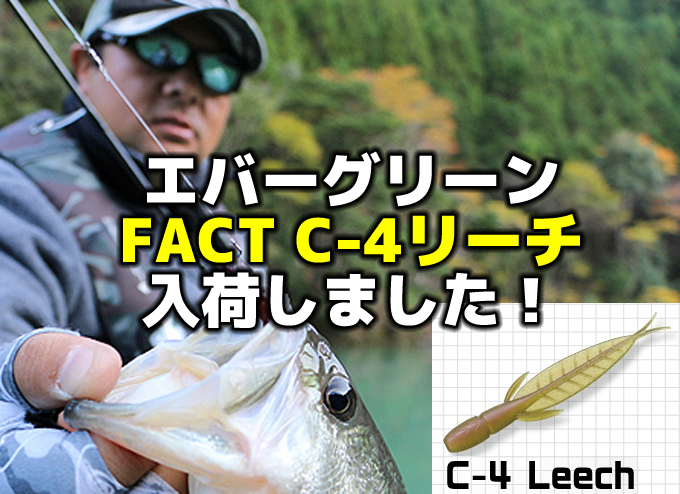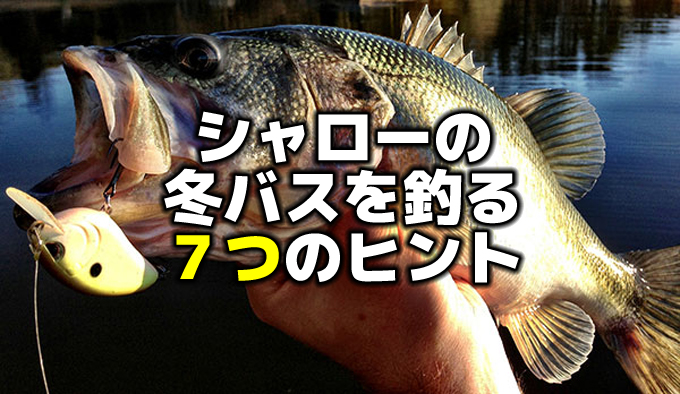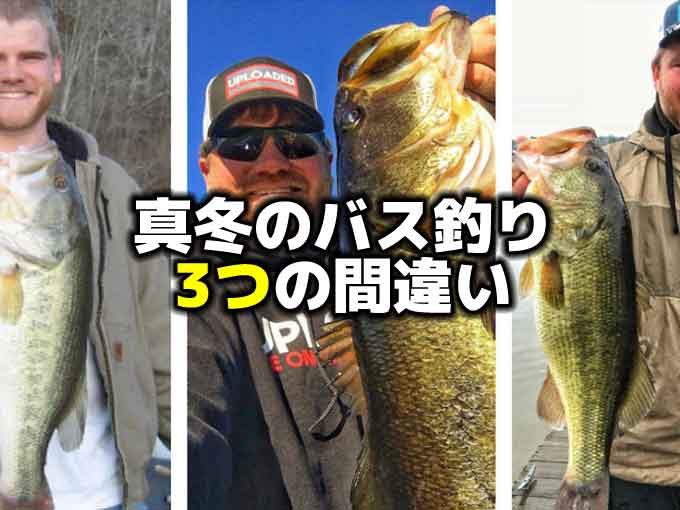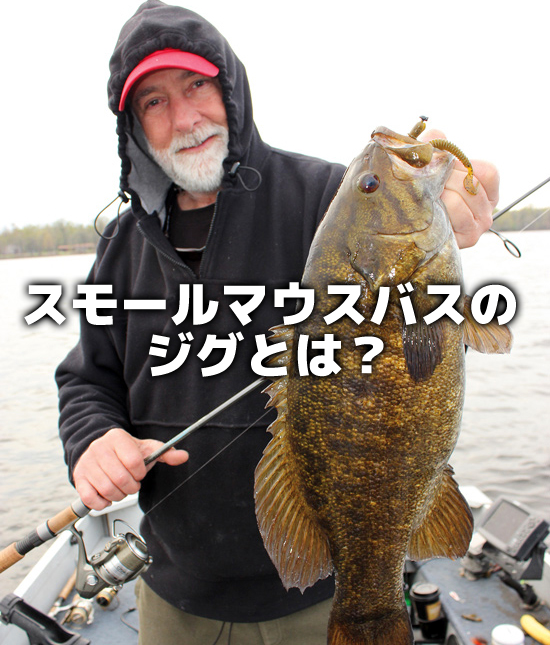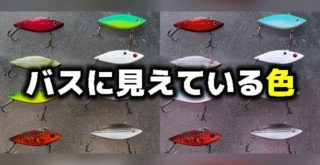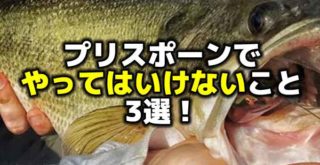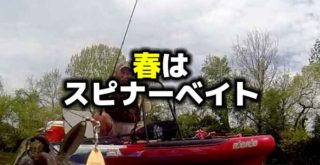冬のジャンクフィッシング
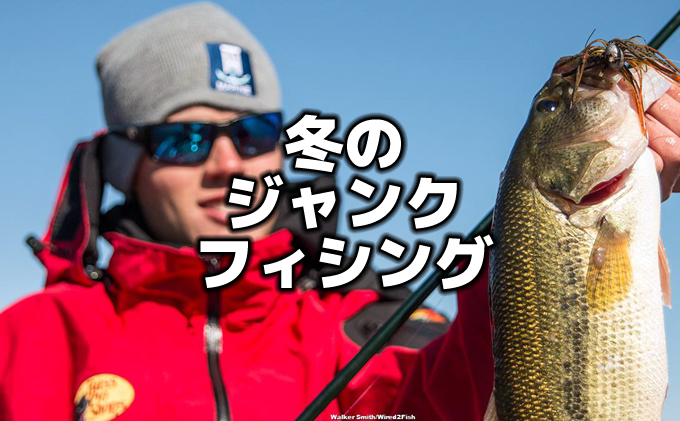
Photo by scout.com
こんにちは!店長の小山です!
本日は海外サイトより、”Coldwater Junk Fishing 101”という記事を引用してご紹介いたします。
引用先:scout.com”Coldwater Junk Fishing 101”by Walker Smith – Dec 28, 2014(海外サイトです)
「バス釣りの半分はまず、バスを見つけること。」
これは多くのメディアで発せられる、バス釣りでの成功への格言的なものだと思います。
まさしくその通りで、バスがいないところでいくら頑張ってみても、無意味ですよね。
では、冬という季節ではどうでしょうか。
私のブログでは海外の記事を多く紹介させていただいていますが、冬という季節は他の季節に比べて、バスの居場所はだいたい決まっているようなことが書かれています。
それも、その通りなのでしょう。
しかし、冬はそこから先も、大きな問題なのではないでしょうか。
苦労して見つけたバスが果たして簡単に口を使うとはなかなか思えません。
この記事は、アメリカの釣りメディア「Wired 2 Fish」の記者、ウォーカー・スミス氏が、冬のシャローのジャンクフィッシングをすすめています。
ディープのバスを苦労して見つける代わりに、冬だろうがよりアクティブなシャローのバスを釣っていくというこの考え方。
皆さんはどう思われるでしょうか。その内容をお確かめ下さい。
ジャンクフィッシングとは何か
Simplicity is certainly a key factor when you’re coldwater junk fishing. To fully understand this technique, take a step back in time to your earliest days of bass fishing. When you first started experimenting with this sport, what was your plan of attack? If you’re anything like me, you probably walked the banks of local ponds and threw whatever you could think of at anything that looked “fishy”.
That’s basically the premise of junk fishing.
There are some strategic advantages to consider, which we’ll discuss shortly, but the whole idea is to cover water quickly and specifically target shallow bass despite the cold temperatures. It might sound crazy to go against conventional wisdom, but there’s a compelling argument for this method. The bass will be shallow for one reason— to feed. So although they may be fewer in numbers, they’ll likely be much easier to catch.
This strategy can be a viable option for many anglers, especially if you find yourself in one of the following categories.
- No electronics— Not everyone has the means to purchase electronics for their fishing boat and there’s nothing wrong with that. If you lack the equipment to efficiently locate deep wintertime bass, junk fishing can be an effective way to stay in the action. You may not get dozens of bites each outing, but you’re likely to come across a few sizeable bass while they’re feeding in the shallower, warmer waters.
- Shallow fishing is your strength— We all have different strengths and weaknesses but for whatever reason, fishing in deep water tends to intimidate many anglers. While you should always make an effort to improve your game, you’ll feel right at home with this technique. You can break out your favorite jigs, crankbaits and soft plastics and expect success, especially on sunny days.
- Bank anglers— Folks who fish from the bank often feel a bit disadvantaged this time of year. Can you blame ‘em? The majority of the bass are most likely hanging around deep structure and cover and bank anglers have limited ways to reach them. If you’re prepared to don your “walking shoes” and put in a little extra legwork, you’ll be able to walk the banks of your local fishery and put your baits in front of accessible, more active bass.
冬にジャンクフィッシングをする場合、シンプルさが重要な要素になります。このやり方を完全に理解するには、あなたのバス釣り史上、最古の時代まで遡りましょう。あなたが最初にバスフィッシングを始めたとき、どんな計画を立てていたでしょうか?私の場合は、地元の池の岸辺を適当に歩いて、 「魚のように見える」ものには何でも投げていた感じでした。
それが基本的なジャンクフィッシングの前提となるものです。
そうする理由がいくつかあるので後述しますが、全体的な考え方としては、寒い季節にもかかわらずフィールドを広範囲にカバーし、特にシャローのバスをターゲットにするということです。一般的なセオリーからはかけ離れているのでバカバカしく聞こえるかもしれませんが、これには説得力のある根拠があるのです。バスはシャローでフィーディングする。だから、魚の数は少ないかもしれませんが、いれば捕まえるのはおそらく簡単なはずです。
この戦略は、多くの釣り人にとって実行すべき選択肢に当てはまるはずです。
- 魚探がありません – 誰もがボートに魚探を積んでいるわけではありません。冬のディープのバスを効率的に見つけるための設備が不足している場合、ジャンクフィッシングに打って出るのは効果的なことです。何十回ものバイトは得られないかもしれませんが、浅くより暖かいエリアで餌を食べている数少ないバスに遭遇する可能性はあります。
- シャローの釣りが得意なはずです – 私たちには皆、長所と短所がありますが、何らかの理由でディープでの釣りが苦手という釣り人は多い傾向があります。釣りが上手くなるためには常に努力する必要がありますが、ジャンクフィッシングは適当にやっても大丈夫です。お気に入りのジグ、クランクベイト、ワームを準備し、特に晴れた日には成功を期待しましょう。
- オカッパリアングラー – オカッパリで釣りをする人には、この時期は少し不利な部分を感じることがよくあります。あなたは彼らに責任があると思いますか?バスの大半は、ディープのストラクチャーやカバーの周りにサスペンドしている可能性が高く、オカッパリアングラーにはそこに届ける方法が限られています。 ウォーキングシューズを履いて、少し足を延ばす準備ができていれば、あなたの地元のフィールドを歩き回り、可能性のあるよりアクティブなバスの前にあなたのルアーを通すことができます。
温かい水を探す
Warm water is a relative term, especially in the winter months. It’s unlikely you’ll find water that’s tepid to the touch, but it’s important to understand that just a single degree or two can make a monumental difference in your success. This warmer water can attract three very important players— shad, crawfish and, most importantly, big bass.
- Shad— It’s not at all uncommon to find large populations of shallow baitfish in cold water, especially after a recent warm rain. The newly introduced runoff washes microorganisms into the fishery, which acts as a dinner bell for the shad.
- Crawfish— When the sun is beating down on a particular bank in the winter months, our crawfish friends become quite active. They’ll emerge from the cracks and crevices in rocky banks and begin their search for food. They’re not particularly renowned for their speed or agility and they represent a substantial meal for hungry bass, so they’re analogous to a filet mignon this time of the year.
So how do we find this warm water? It’s not as complicated as it may seem. Concentrate your efforts on sunny banks and specific cover that conducts and holds heat well.
- Gravel— If you’ve ever watched a cold weather fishing tournament on television, you’ve probably noticed gravel being a common denominator. These small, pea to golf ball-sized rocks warm quickly and hold heat for several hours afterward. This will slightly increase the surrounding water temperature and attract both forage and bass to the area.
- Chunk rock— If you can find long stretches of shallow riprap, such as causeways, you won’t be far from active bass. Not only do the corners of these bridges act as concentration points for shad throughout the entire year, but they also play host to hundreds—if not thousands—of crawfish in cold water conditions.
- Clay banks— Clay banks are largely ignored by bass anglers and it makes sense if you think about it. They just don’t look very sexy when compared many other banks. But they actually warm up quickly and hold head fairly well, which is why you hear about so many professional anglers targeting them in cold water. Bare clay banks can be surprisingly effective when fished with small, finesse crankbaits and nearby wood cover only sweetens the deal.
暖かい水と言っても、特に冬に関しては相対的な意味になります。触っても温かいと感じる水を見つけることはまずありませんが、成功するには1℃でも水温が高い方が大きな違いを生むことがあることを理解することが重要です。この暖かい水は、3つの非常に重要な生き物、シャッド、ザリガニ、そして最も重要な、大きなバスを引き付けることができます。
- シャッド – 特に暖かい雨の後、冷たい水の中でもシャローにベイトフィッシュの大集団を見つけることは珍しくありません。雨によって流れ込んだ水は、微生物をフィールドに流し込みます。そしてそれは、シャッド(小魚)へ食事の時間を告げる働きをするからです。
- ザリガニ – 冬の間に太陽が特定のバンクに当たると、私たちの大好きな友達であるザリガニがかなり活発になります。彼らは岩場の岸辺の裂け目や割れ目から出て、食糧を探し始めるでしょう。この時彼らはスピードや敏捷性がなく、空腹のバスのための「おいしい」食事となるので、この時期にはA5ランクの黒毛和牛なみのごちそうと言っていいでしょう。
では、この暖かい水をどうやって見つければいいのか?それは意外と複雑ではありません。バンクにある熱を運ぶ特定のカバーにあなたの努力を集中させてください。
- 砂利 – テレビなどで寒い時期の釣りのトーナメントを見たことがあるなら、おそらく砂利が釣れている人の共通点であることに気づいたでしょう。この小さなエンドウ豆からゴルフボールまでの大きさの砂利は、すぐに暖まり、その後数時間熱を保ちます。これが周囲の水温をわずかに上昇させ、ベイトとバスの両方をそのエリアに引き付けるのです。
- 石 – コーズウェイ(リップラップで作られた湖を渡る遊歩道)のようなシャローでのリップ・ラップの長いストレッチを見つけることができれば、アクティブなバスはそう遠くないでしょう。これらの両端は一年中シャッドの集中するスポットとして機能するばかりでなく、ザリガニにとっても低水温という条件では数千とまでは言わなくても数百もの数に及ぶ住みかになることもあります。
- 粘土質のバンク – 粘土質のバンクはバスアングラーにとっては無視されがちですが、あなたがそこに可能性があると考えるのは理にかなっています。そこは他のバンクに比べると、とても魅力的には見えません。しかし、実は意外とすぐに暖まりやすく、結果もすぐに出やすいと、多くのプロアングラーが低い水温の中でそこをターゲットとする理由として言われます。なにもない粘土質のバンクでは、小さなフィネスクランクベイトをウッドカバー付近で釣ると驚くほど効果を発揮することがあります。
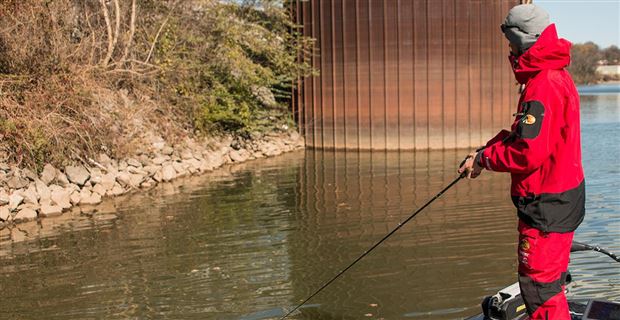
Photo by scout.com
ディープエリアが隣接すればより効果的
Although coldwater junk fishing is very effective, don’t think that the bass will be cruising the shallows throughout the entire day. This may be true in very specific situations but more than likely, they’re feeding for very short periods before becoming inactive. Remember, bass are very aware of their energy exertion right now, so they’re going to grab a quick bite to eat and get the heck out of dodge.
If you can find one of the aforementioned bottom compositions adjacent to deep water, however, you’ll drastically improve your chances of finding shallow, active bass.
- Security— Bass are some insecure little boogers, especially in the winter. They feel safest in deep water this time of the year, so they’re most likely to inhabit areas that offer them the perceived security of deep water. It’s kind of like one of us going to a bad side of town to grab a burger. The burger is good and worth the risk, but we’re not going to hang around long after we finish our meal.
- Smart energy utilization— Shallow water areas adorned with nearby deep water allow bass to expend their energy in an efficient manner. They’re not likely to travel great distances for a meal right now but they will, however, move vertically throughout the water column to take advantage of feeding opportunities. Adjacent deep water gives them the opportunity to slide up to the shallows to eat and quickly slide back out to the security of deep water.
So although we’re targeting shallow water, fishing in the backs of creeks probably isn’t the most efficient use of time. Instead, look for main river banks, main creek banks or channel swings.
冬のジャンクフィッシングは非常に効果的ですが、バスは一日を通してシャローを回遊するとは思わないでください。これは非常に特殊な状況では当てはまるかもしれませんが、基本的には非常に短かい間しかフィーディングはしません。覚えておいてください。バスは、エネルギーの消費のことをよく知っているので、今すぐにでもさっさと食事を済ませてここから立ち去りたいのです。
しかし、前述したようなボトムの質のうち1つでもディープに隣接している場合は、シャローのアクティブなバスを見つけるチャンスが大幅に向上します。
- 安全性- バスは、特に冬には臆病者のくそ野郎になります。彼らはディープの中が最も安全だと感じています。そのため、ディープの安全が確保されているエリアに生息する可能性が最も高いのです。それは、ハンバーガーを買いに治安の悪い街に行くようなものです。ハンバーガーはおいしいし、リスクをかける価値がありますが、食事を終えた後にずっと街をぶらぶらしてはいられません。
- 賢いエネルギー活用 – ディープが隣接するシャローエリアは、バスが効率的にエネルギーを消費することを可能にします。彼らはこの時期、食事のために大きな距離を移動する可能性はありませんが、食事をするためには水中を垂直に移動します。ディープが隣接するということは、シャローでの食事の後に安全なディープにすぐ戻れるというメリットを与えます。
そういったわけで、シャローを目標にするのですが、クリークのバックウォーターでの釣りは時間の最も効率的な使い方とはおそらく言えません。それならば、メインリバーのバンク、メインクリークのバンクでチャンネルが岸に寄るところを探してください。
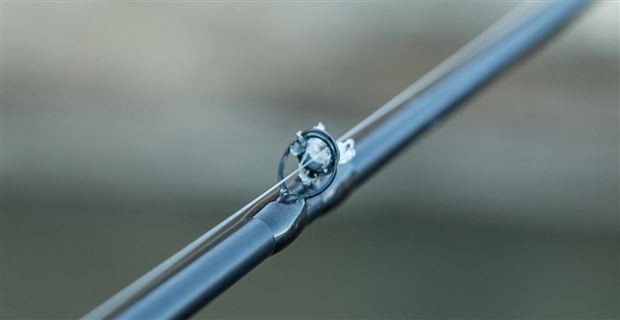
Photo by scout.com
戦える武器を用意してください
Now that you’re able to recognize high-percentage areas for shallow water junk fishing this winter, you’re left with the fun part— catching them. While specificity and simplicity are most often preferred in bass fishing, this technique can be the polar opposite. Hence the name “junk fishing”. You’re likely to have all of your “junk” scattered about by the end of the day.
Before we get into bait and lure selection, let’s quickly touch on the importance of the aggravation factor. Even when you run across these shallow bass, they may not always be willing to choke on your offering within the first few casts— it’s just the nature of lethargic, wintertime bass behavior.
But when you run across key pieces of cover on which you’d expect a fish to position, repeated casts can force them to react instinctively. Before you assume there isn’t a fish on that awesome-looking blowdown, stump or dock, make several casts. It’s totally possible to irritate them into biting.
- Small crankbaits— Finesse crankbaits such as a Rapala Shad Rap or SPRO Little John can be outstanding choices for wintertime junk fishing. It’s largely a percentage game, so covering water quickly and efficiency is of the utmost importance. Make 45-degree casts in order to find the most productive strike zone and remember to keep your retrieve speed slow to cater to the bass’ apathetic nature.
- Shaky heads— They’re a staple in the winter months and the reason is simple. They catch fish when larger, bulkier presentations fall short. For an all-purpose approach, try a 3/16-ounce shaky head and a small finesse worm such as a Strike King KVD Perfect Plastic Finesse Worm. This combination can be easily fished in depths ranging from 1-foot to 30 feet, so you won’t have any problems maintaining bottom contact.
- Jigs— If you’re someone who likes to fish for a few big bites each day, jigs are perfect for your approach. It’s tempting to cast a lighter jig due to the lethargic bass behavior, but a 1/2-ounce model can be incredibly effective. When you pitch or flip it next to a piece of cover, its fast descent often surprises the bass and takes advantage of its predatory instincts.
- Bladed swim jigs— Often overlooked in the winter, these lures can work surprisingly well right now. Instead of a simple “cast and wind” method, make long, 45-degree angle casts to shallow banks and let it fall to the bottom. After engaging your reel, retrieve it just slow enough so you can barely feel the blade thumping back and forth. Your bites won’t be very noticeable— they’ll usually feel like a small twig on your line. So pay close attention to your line’s movements.
- Stick worms— These worms are somewhat of a “do nothing” approach, but that’s perhaps why they’re so effective in the colder months. Try rigging a Yamamoto Senko several different ways— wacky, Texas-rigged or weightless Texas-rigged and pitch it around shallow cover near deep water. A slow and deliberate presentation can be quite effective, so resist the urge to move your rod tip too much. Just let the worm do the work for you.
Whether you’re not comfortable with deep fishing or you simply despise it, don’t pack up your rods for the winter. Although it’s largely an imperfect science, shallow water junk fishing can be exceptionally effective in the coldest months of the year.
ここまで読んだあなたは、この冬、シャローでのジャンクフィッシングで高い確率で釣れるエリアを知ることができたと思います。あとは釣るだけです。選択肢の多さとシンプルさがバス釣りの最も好まれる部分ですが、このテクニックは正反対の性質を持っています。これが、ジャンクフィッシングと呼ばれるゆえんです。一日が終わる頃には、あなたの 「適当さ」があちこちに散らばっていることでしょう。
ルアーの選択に入る前に、まずは最悪の事態を想定しておきましょう。あなたがこれらのシャローのバスと出会ったとしても、数回のキャストで喜んで食ってくるものではないかもしれません。それが冬の寒さの中にいる無気力なバスの性質です。
しかし、あなたが魚がいると予想されるカバーの主要な部分を横切ってルアーを通すとき、繰り返しキャストすると、彼らは本能的に反応することがあります。あなたは、その素晴らしいレイダウン、スタンプや桟橋に魚がないと判断する前に、多くのキャストを行ってください。バスをイライラさせることができます。
- スモールクランクベイト – ラパラ・シャッドラップやSPRO・リトルジョンなどのフィネスクランクベイトは、冬のジャンクフィッシングのための優れた選択肢です。これは主に確率のゲームなので、素早く効率的に攻めることが最も重要です。最も効果的なストライクゾーンを見つけるために、岸から45度のキャストをし、バスの無気力な性質に対応するためにリトリーブスピードをスローに保つことを忘れないでください。
- ジグヘッドリグ – これは冬の定番であり、理由は簡単です。バルキーなルアーでのプレゼンテーションでうまくいかなかった時に、ビッグフィッシュが釣れるからです。多目的なアプローチできるように、3/16オンスのジグヘッドと、ストライクキングKVDパーフェクトプラスチックフィネスワームのような小さなフィネスワームで試してみてください。この組み合わせは、水深30センチから9メートルの範囲でも釣ることができるので、常にボトムコンタクトを維持させておかなくても問題はありません。
- ラバージグ – あなたが1日に2,3匹のビッグバスだけ釣れればいいという釣りが好きな人なら、ジグはあなたのアプローチに最適です。無気力なバスのために軽いジグをキャストしようと思いがちですが、1/2オンスのモデルは信じられないほど効果的です。カバーの横にピッチングやフリッピングをし、その速いフィールスピードでバスを驚かせ、捕食者の本能を利用するのです。
- チャターベイト – 冬には見落とされることが多いこのルアーですが、実はこの時期、驚くほどうまく機能します。シンプルな「投げて巻くだけ」ではなく、シャローバンクから45度の角度でロングキャストをし、ボトムまで沈めたら、あとはリールで魅力的な、ブレードが前後するのを強く感じることができる程度に、ゆっくりとリトリーブしてください。バイトは非常に小さなものです。通常はラインが小さく弾かれるように感じるでしょう。だからラインの動きには細心の注意を払ってください。
- スティックワーム – このワームではほぼ「何もしない」アプローチになりますが、それがたぶん寒い時期には効果的なのでしょう。ゲーリーヤマモト・ヤマセンコーをいくつかの方法でリギングしてみてください。ワッキーリグ、テキサスリグ、ライトテキサスなどで、ディープが隣接するシャローカバーの周りに投げます。ゆっくりと慎重なプレゼンテーションが非常に効果的なので、ロッドティップを動かしたくなる衝動には我慢してください。ワームに仕事をさせるようにしてください。
あなたがディープの釣りに慣れていなくても、単にディープが嫌いであっても、冬だからと言ってロッドを片付けないでください。科学的な根拠はありませんがが、シャローのジャンクフィッシングは、一番寒いときでも実は意外と効果的なんです。
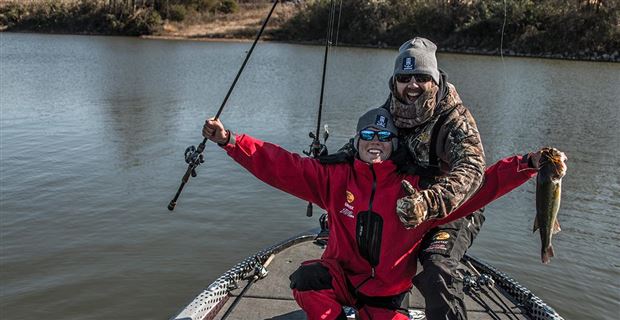
Photo by scout.com
いかがでしたか。
バス釣りは何が起こるかわかりませんから、真冬のシャローがダメという理由もないということですよね。
私も、冬はまずディープといいますか、水温が安定していそうなところを意識するんです。そういうところを信じて、一日中徹底的にやるんです。でも、釣れない事の方が多いんです。
そんな時私は、開き直って真冬でもシャロー撃ちに切り替えます。
開き直ってシャロー撃ちをしたからって、結局私に釣られるバスはいないんです(笑)。そんな気はするんですけど、シャローの釣りはやはり魅力的で、集中力も続くんです…
やりきれるんです…
楽しいんです…
冬でもしっかりシャローで結果を出す方がおられるんですから、すべての可能性を捨ててはいけませんよね。
この釣りが、冬の攻略法として紹介されているわけではありませんが、魚探もない、ボートも出せない、でも釣りはしたいから釣れなくてもいいから釣りをする。という方でも可能性はゼロではありませんよという安心感を与えてくれますよね。
少しの可能性を信じているからこそ釣れた時の満足度が大きい。これが冬のバス釣りの醍醐味ですもんね。
ぜひ冬でも釣りに出かけて、折れない心を鍛えていきましょうね。
それでは、また。
毎度ありがとうございます!






